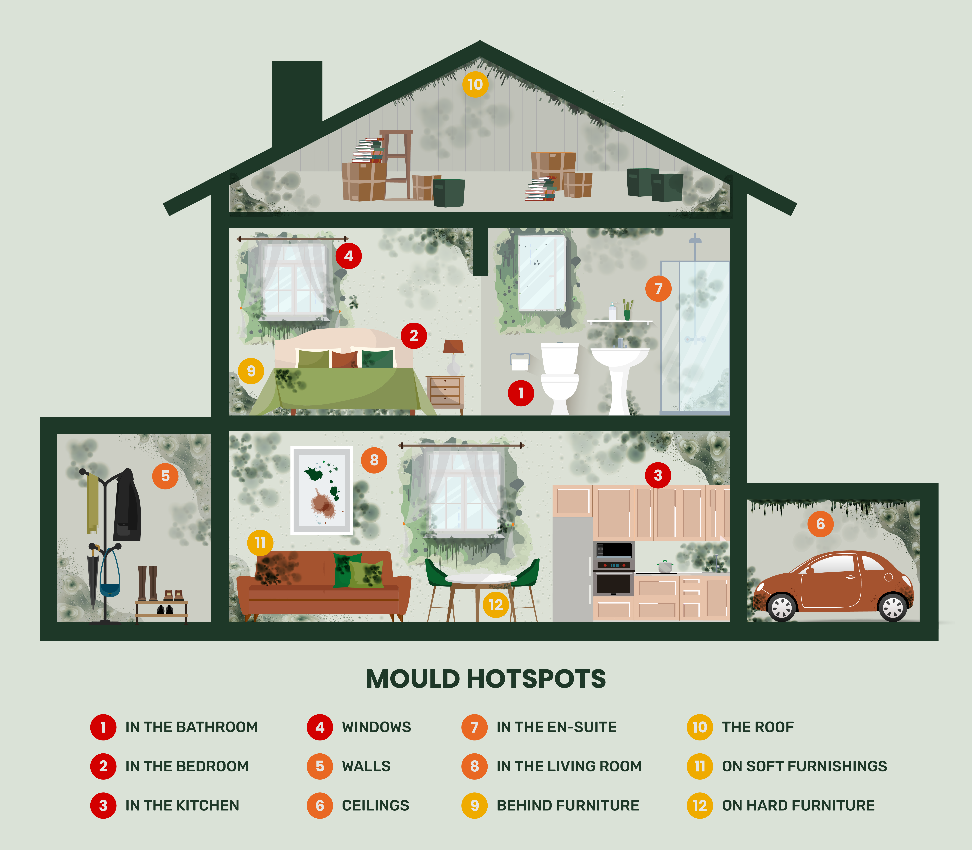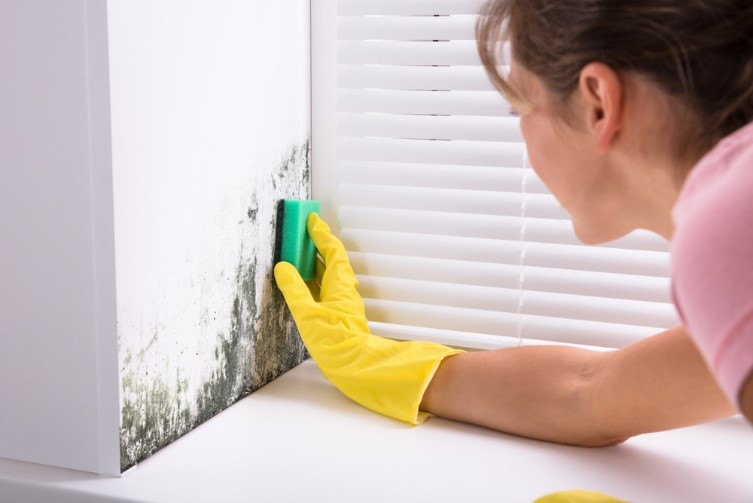London is the second WORST city in the UK for mould
- Almost half of Londoners (49%) have mould in their bathrooms
- Experts reveal the dangers of mould and how to protect your home and family
- 9 in 10 Londoners have mould in their home

Homebase have created a helpful heatmap showing the most common places dangerous mould could be hiding in your home.
London has been revealed as the city with the second worst mould problem in the UK, with 9 in 10 living among it (88%), leading to potentially harmful effects for humans and pets.
With mould most common from October through to April, helpful home and garden experts at Homebase have investigated the scale of the issue across the UK, looking into where it’s most commonly found, as well as the potential health impacts.
Shockingly, almost a quarter of Londoners (23%) sleep each night with potentially dangerous mould in their bedrooms, whilst half (49%) have it in their bathrooms. Other common mould hotspots include the kitchen (17%), the windows (14%) and the living room (9%), with 10% also finding it hidden behind furniture.
Out of over 2,000 people in the study, only 15% of Brits say they’ve never had an issue with mould, meaning a huge 85% have experienced some kind of mould problem in the home.
How to deal with mould issues
Any type of mould in the home can be dangerous. However, ‘stachybotrys chartarum’, or black mould, is most commonly known as toxic mould. It can cause a huge range of health issues for humans and even pets – with children at a greater risk. According to the NHS, milder symptoms can include headaches, skin rashes and respiratory damage, while long-term exposure to mould can cause chronic illness. With repeated exposure, you inhale toxic trichothecenes, which can lead to the development of chronic inflammatory response syndrome. 17% of Londoners currently have this toxic black mould in their home.
Removing mould safely is important. To remove mould, experts at Homebase suggest:
- You should treat any damp issues first, as this can be a driving factor.
- Then, remove mould by wiping down walls and surfaces with a fungicidal wash, which can be left for 24 hours before thoroughly rinsing with clean water.
- Wear protective gear such as rubber gloves and a face mask, as mould spores can travel in the air when cleaning.
To further help those worried about mould, Jimmy Englesoz, Product Manager at Ronseal and all-round DIY pro says innovative anti-mould paint can make a huge difference:
“Fundamentally, these paint products make the surface of your walls inconducive for mould to live on, whether it’s a chemical that prevents the mould directly or a formula that insulates the walls.”
“It’s a common mistake for people to use Anti-Mould Paint and then paint over with a colourful paint. Anti-Mould paint needs to be your topcoat with the biocide protecting the surface of your walls to work correctly. If you paint over it, you’re painting over the protective barrier and giving mould a surface it can live on. Also, try to avoid condensation building up for 24 hours while the paint sets. If you’re painting in a bathroom and then shower straight after, allowing moisture into the room will impact the finish and therefore the effectiveness of the biocide as a result.”
To protect the damp areas of your home, please visit: https://www.homebase.co.uk/paint-decorating/interior-paint/damp-proof-anti-mould-paint.list



